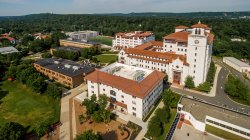How bad could NJ’s COVID-19 wave be by Thanksgiving? Dr. Silvera Comments.
Posted in: College News and Events, Public Health

Dr. Stephanie Silvera, Professor in the Public Health Department, said that Murphy’s new restrictions — a 10 p.m. to 5 a.m. curfew for indoor dining, no seating at bars and a temporary ban on interstate indoor sports — could have a mitigating effect simply by reducing indoor activity. But she doesn’t expect dramatic results that could reverse in current upward trends.
“He’s taking some important and necessary steps and I recognize that he’s trying to keep things as open as possible,” Dr. Silvera said. “But with the rate of new cases accelerating, those steps may not be enough. So I think we should all expect more restrictions.”
Murphy has said his administration is — at least for now — “acting with more precision-based actions” to help stop the spread of the virus, as opposed to broad restrictions as we saw in the spring.
Asked whether we’re better equipped to prevent the spread of COVID-19 now compared to the last time new case numbers were this high six months ago, Dr. Silvera said people know what to do, they just have to buckle down and do it.
“I’d like to think that we’ve learned as individuals how to protect ourselves and those around us, but unfortunately there’s a sort of counterbalance of the frustration that I think a lot of people feel, in terms of having to remain sort of distant and isolated from their family,” she said.
She also worries that people have gotten used to gathering outside and will continue that behavior even as get-togethers are forced indoors.
“I’m not sure that we have gotten ourselves into the mental space to do what’s going to need to be done to get through the winter without seeing a pretty dramatic increase in the number of cases,” she said.
Dr. Silvera said there are several numbers that are concerning as we head into the colder months, including counties where there are consistently over 200 cases a day. That’s around half what the entire state was seeing for the rolling seven-day average of daily new COVID-19 cases eight weeks ago, and an increase of more than 340%.
